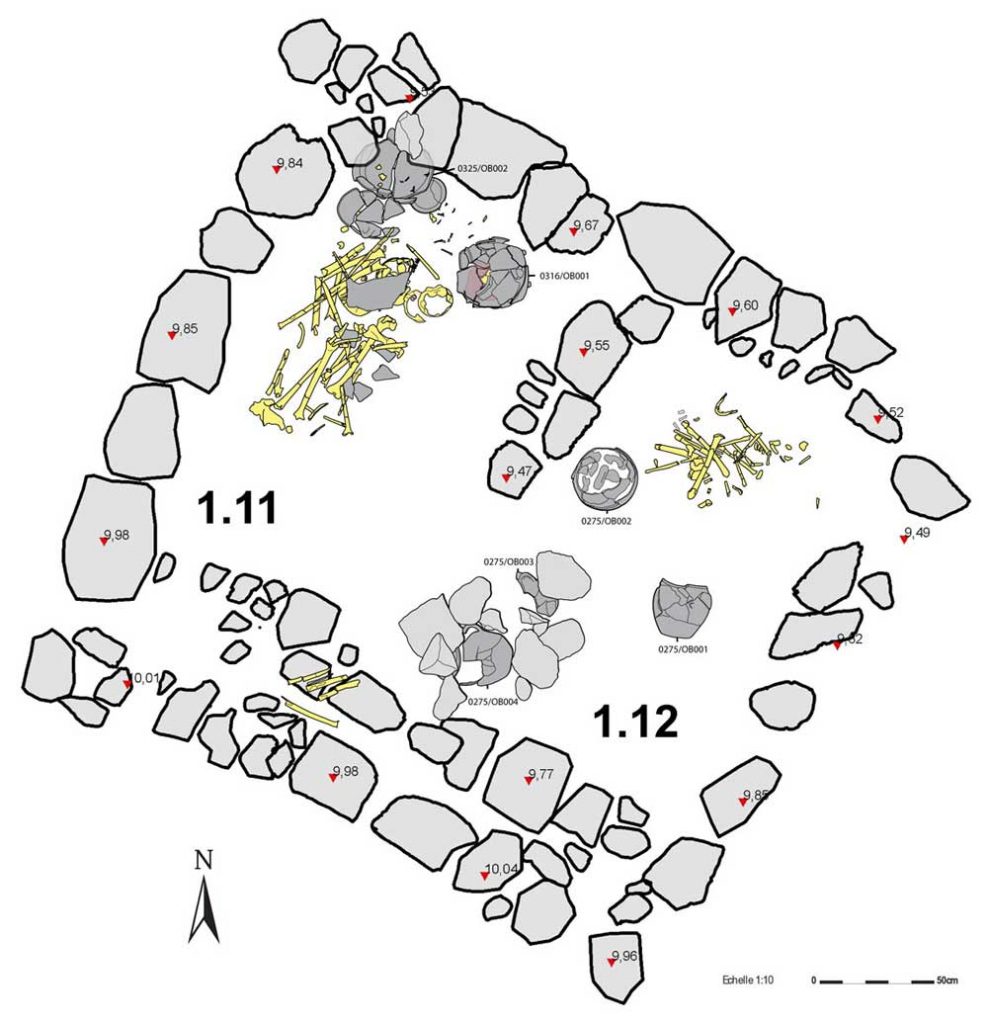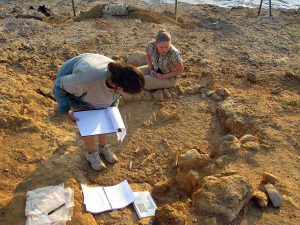Since the very start of excavation of the cemetery area (Zone 1 & 9) at Sissi, two specialists in archeothanatology and bioanthropology, Isabelle Crevecoeur & Aurore Schmitt, were present, directing a larger team of anthropologists.
Careful observations and recording of the human remains, as well as the associated artefacts, allowed us to restore precisely and reliably the funerary gestures and set the bases of the interpretation of the funerary practices. The methodology applied follows the recommendations proposed by the archaeothanatology discipline developed in France over the past three decades (Boulestin & Duday, 2006) which has completely changed the principles of mortuary analysis (Duday, 2009). It aims at connecting the position of the skeletal remains with the original position of the body and the burial context. The proposed methodology combines knowledge from biology about how the human body decomposes with detailed observations of the archaeological context in the field; it studies how the decomposition process interacts with the constructed grave environment to yield the final spatial configuration of skeletal remains as found at the moment of excavation. In addition, post-depostional processes such as flooding, root action, insect activity, and burrowing animals must are taken into consideration. As such, archaeothanatology represents a new way of studying burials, with technical expertise beginning at the excavation stage and forming the basis for any interpretation.
It attempts to study and explain every single deviation from anatomical articulation of the skeletons.
Part of the anthropological work is also related to the biological identification of human remains (age-at-death determinations, sexual diagnosis, metric and non-metric variations, pathologies, etc.). These data are essential to interpret the spatial repartition and organization of the burials. The biological characterization of these human remains may also provide information about the identity, the life conditions and behaviors of Minoan people.
Example: burial room 1.11
This is a rectilinear room divided into two parts by a wall which may be dated to EM IIA.

Fig 2 : structure 1.11 & 1.12, successive depositions of 4 individuals in compartment 1.11.
Compartment 1.11 contained a disturbed collective burial concentrated in the north-east part of the room and two jars. Although here is no clear anatomical connection, the anthropological analysis allows associating several pairs of bones together based on metric and morphologic characteristics. The human remains represent a minimal number of four individuals. Every anatomical part is present even the smallest bones, such as the hand and feet bones, which suggests a primary deposit. The gatherings of the skulls in one part of the deposit and the reorganization of the bones from one individual suggest that this location was used successively for primary deposition and that part of the previous buried individuals were taken away or rearranged to leave more space for new deceased.
A variety of practices has been recognized during the time period of use of the cemetery (from Early Minoan IIA to Middle Minoan II) ranging between primary individual interments (with decomposition taking place at the place of initial deposition of the body) to collective burials (successive inhumations) as well as secondary deposits (related to the displacement of bones with no relation to the funeral ceremony process) and secondary burials (result of double funeral ceremony).
Isabelle Crevecoeur
(UMR 5199, PACEA, Université Bordeaux 1, France)
& Aurore Schmitt
(UMR 7268, ADES, Université Aix-Marseille, France).
References
- Boulestin B. & Duday H. 2006 Ethnology and archaeology of death:from the illusion of referencesto the use of a terminology. Archaeologia Polona, vol. 44: 149-169.
- Duday H., 2009. The Archaeology of the Dead. Lectures in Archaeothanatology. Oxbow Books, Oxford, 158p.
